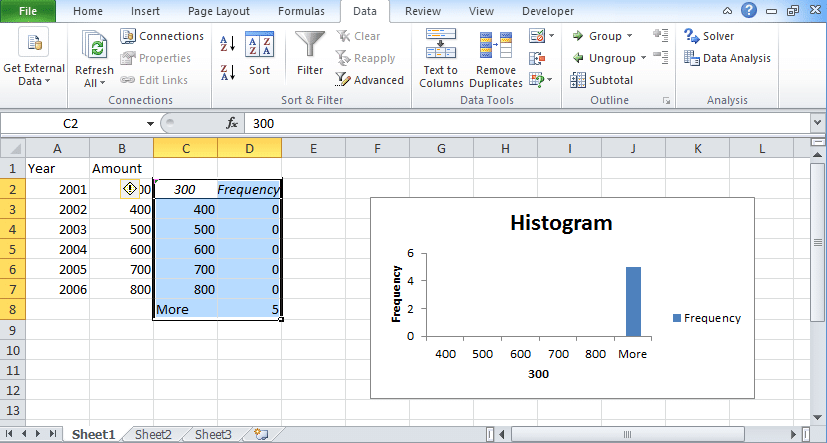
#Histogram in excel 2016 ad in manual
Using Microsoft Excel, the chart function in Microsoft Word or manual sketching, display the information in the form of a histogram like this with age group on the X-axis and percentages on the Y-axis. categories that become the bars in the graph) are automatically created in Excel 2016 using Scotts Rule. Step # 1: Construct a Histogram Using the Data Given Above on a Chart

#Histogram in excel 2016 ad in how to
I have seen various videos and web pages that show how to do this in Excel 2016 and later, so I am co. Can someone please advise When I select format axis there is no option to modify bin (see attached).

The following table shows the results that were obtained from the survey: Age Group Percentage of people who participated in sports at least twice a week 16 – 24 years 60% 25 – 34 years 45% 35 – 44 years 35% 45 – 54 years 25% 55 – 64 years 15% 65 – 74 years 10% Over 75 years 3% Hello, I have created a histogram and now I want to modify the width and number of the bins. They were asked if they participate in a sports activity at least twice a week. If you are a beginner, knowing how to draw them together is essential.Ĭonsider the following example for explanatory purposes: Worked Example – Men and Sports:Ī survey was conducted amongst 50 men aged 16 to 74 years. In this section, we will show you how to combine a histogram and a curved line in a chart. How to Draw a Histogram and a Curved Line Chart Together Difficult to draw and interpret for data above 50 values.Note: Excel uses Scott's normal reference rule for calculating the number of bins and the bin width. On the Insert tab, in the Charts group, click the Histogram symbol. The intermediate values between two points may be misleading If you have Excel 2016 or later, simply use the Histogram chart type.However, curved line graphs have some limitations, which are mentioned as follows: You want to make a prediction of future values in the data set.You want to highlight changes in one variable for constant values of the second variable.A curved line graph is a convenient statistical representation when: The curve bends upwards or downwards to show a trend in the data set. It basically denotes the change that has taken place over time in a given set of data. When you need to find out the amount of input in the data set (For example: how many people the survey was conducted on)Ī curved line graph is another way to display the given numerical information on a chart.When multiple categories are present in the data.Histograms are inconvenient in the following scenarios: They work well with a large range of data.Histograms are quite popular and widely used because: It can also be described as a frequency distribution that shows how often a certain value occurs in a given set of data. What is a Histogram?Ī histogram is a graphical representation of a set of data that displays data values in a specified range. However, both the histogram and line graphs have different properties and characteristics that must be understood. The data must be discrete and continuous.

In statistics, a histogram and a curved line graph are both ways to display a given set of numerical data on a chart.


 0 kommentar(er)
0 kommentar(er)
